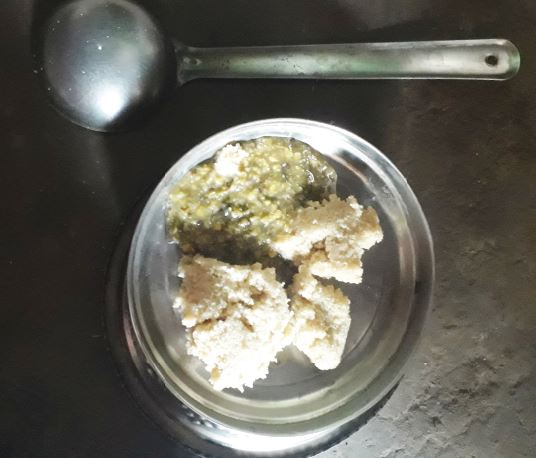
The United Nations has declared 2023 as the International Year of Millets. But as efforts are on to conserve millets, the sikiya millet enjoyed by the Baiga tribals is on the verge of disappearance, reports DEEPANWITA GITA NIYOGI
Millets, once termed coarse grains not fit for consumption, have been making waves for the past few years. Efforts have been made to bring these ancient grains back to the plate through specialised millet missions in Odisha, Telangana and Andhra Pradesh, aimed at revival and promotion. Indeed, the millet revolution is now complete with the United Nations declaring 2023 as the International Year of Millets.
Millets are nutritious and bio-diverse crops, resilient to climate change. For centuries, they have been traditionally cultivated by tribal communities, keeping in mind agro-ecological farming practices, which respect the environment. But unlike ragi which is widely known and easily available in the market, some millets have remained obscure except outside the Adivasi world. One such millet is sikiya, an extremely small-grained millet yellowish in colour and relished by the Baiga tribal community of Madhya Pradesh and Chhattisgarh.
Sikiya, a wild crabgrass millet, grows in hilly slopes and uplands. The Hyderabad-based Indian Institute of Millets Research had found its protein content to be high. However, how long sikiya remains the favourite food of the Baigas, remains to be seen. In 2018, extensive travelling in the Baiga Chak area of Dindori district of Madhya Pradesh revealed that this particular millet was vanishing among the Baigas, who enjoy kheer or porridge made from it.

Vanishing millet
The situation is the same in the central Indian state of Chhattisgarh at present. In the state’s Kabirdham district, an elderly Baiga man informed that Adivasi children will soon forget about it. Lamtu Bagdariya, a resident of Bhurshi Pakri village in Kabirdham is 64. “My ancestors used to practise farming in hill slopes traditionally known as bewar. But the government does not encourage it anymore on the pretext that our population is expanding and more plots have to be given to us. But Baigas traditionally grow 12-15 different types of crops on our bewar plots in uplands after controlled burning. Apart from maize and jowar, millets like sikiya, sanwa, kutki and kang are also grown,” he said. Bagdariya added that several of these millets are vanishing, especially sikiya, as bewar has almost come to an end. In some areas, people however, still practise it surreptitiously.
Another Baiga, Budhh Singh Satkuria, said sikiya is rarely found these days. “We have been forced to leave bewar, and so many of our crops, including rare millets, are vanishing. The yield is not much, about 20kg-50 kg, and there is no market value for sikiya. But the millet, kept in mud kothis or containers, can remain as it is for even 20 years.”
Conservation efforts
Efforts have been made to conserve and promote sikiya outside Baiga areas, with little success. Dindori-based agriculture scientist OP Dubey had grown it in June 2020 on a trial basis, but the yield was not at all satisfactory. “To increase productivity, cross breeding should be done, and for that, two landraces are needed,” he said.
Naresh Bunkar, who lives in Kabirdham, and runs a non-profit called Shram Vikas Evam Soch Sansthan, said that the hilly areas of Pandariya block is the district are used for sikiya cultivation mainly by the Baigas. But the crop is almost on the verge of extinction as bewar is disappearing fast. The government has discouraged bewar fearing deforestation and felling of big trees. Instead, Baigas have been given lowland plots where they have to plough the land. In bewar, no such thing is ever done, Bunkar added.
On his part, Dubey said that no real work on sikiya has been carried out and it is still not considered a millet variety. “I grew it on a trial basis and the yield only came to three to four quintals per hectare. But though not economically viable, it can still be grown in Baiga areas with other minor millets.”

Outside Baiga areas
Sikiya has caught the fancy of a farmer in Bankura, who is conserving it. Bhairab Saini from Bankura district of West Bengal is experimenting with sikiya after getting seeds from conservationist Soumik Banerjee. “I started conservation around 2014-15. Along with sikiya, I have 28 other varieties of millets, including browntop and barnyard millets.” Saini, from Panchal village in Bankura’s Sonamukhi block, is growing sikiya on his tiny seed conservation plot measuring two metres by two metres.
In neighbouring Jharkhand’s Godda district, a few Pahariya farmers experimented with sikiya, but failed to get any yield. A resident of Chamdade village, Surja Pahariya, said he got sikiya seeds two years back. Pahariya also went to Kabirdham district, met some Baiga tribals there and derived inspiration to grow it. “I sowed the seeds and handed over to others as well, but did not get any yield. Now, we do not even have seeds left.”

Banerjee said sikiya needs to be grown on uplands where there is no water logging. But as bewar is being discouraged, it seems it will vanish forever. Commercial cultivation has led to the disappearance of many crops, and this includes indigenous paddy varieties as well. But as millets are being championed due to several reasons, efforts should be made to ensure that not a single variety is lost, because when a certain crop vanishes, it takes away with it its associated cultural aspects. The most important thing to remember is that millets have survived under the shadow of paddy, thanks to cultural connotations.
The Chhattisgarh government announced in January that it will procure kodo and kutki, small millets, from farmers at a minimum support price. It would be good if such a welcome step is accorded to sikiya as well to ensure that it remains a part of the tribal food plate.
tehelkaletters@gmail.com












